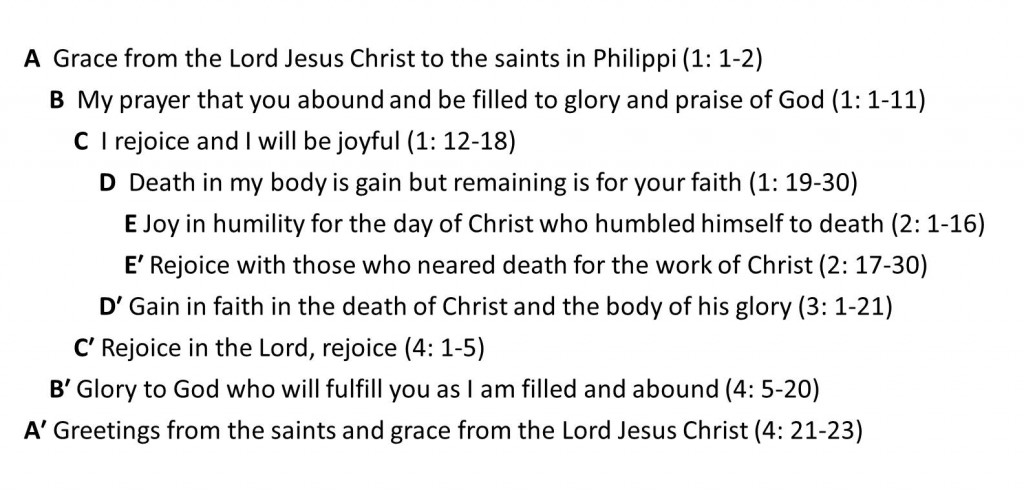 In 359 BC, Philip II, the father of Alexander the Great, began what would later become the great Greek empire around the western Mediterranean world and Southwest Asia. Expanding from Macedonia, he annexed some territory, which had in it a city named Krenides (meaning “fountains”). Philip enlarged, fortified, and renamed the city after himself: “Philippi.” Around 300 years later, as the Roman Empire grew in size and strength, the Roman Emperor, Octavian, established Philippi as a Roman colony in 42 BC. He gave the city a special status, equal to that of cities in Italy and free from direct taxation.
In 359 BC, Philip II, the father of Alexander the Great, began what would later become the great Greek empire around the western Mediterranean world and Southwest Asia. Expanding from Macedonia, he annexed some territory, which had in it a city named Krenides (meaning “fountains”). Philip enlarged, fortified, and renamed the city after himself: “Philippi.” Around 300 years later, as the Roman Empire grew in size and strength, the Roman Emperor, Octavian, established Philippi as a Roman colony in 42 BC. He gave the city a special status, equal to that of cities in Italy and free from direct taxation.
In Paul and Timothy’s day, Phillipi was predominately a Gentile city with very few Jews. We’ll see confirmation of this in Paul and Timothy’s greeting to that congregation. Archaeologists have found no evidence of a 1st-century synagogue there (note: 10 men were required to have a synagogue). Instead, when Paul and Silas first visited the area, they found only an informal meeting place outside the city by the river where several women met on the Sabbath to worship (Acts 16:13).
At the time of the letter, Philippi’s population was around 15,000. The estimated demographics of Philippi are as follows:
- The wealthy Roman elite constituted around 3%.
- Roman farmers living in the city and working land outside the walls, some 20%.
- Service groups (shopkeepers, bakers, hunters, entertainers, et cetera: 1/3 Roman citizens, 2/3 thirds Greek), around 37%.
- The poor (people living below subsistence level, selling marginal goods or begging), 20%.
- Slaves, about 20%. (Peter Oakes, Philippians: From People to Letter, Cambridge: Cambridge University Press, 2001).
Authors: The Apostle Paul and Pastor Timothy
Date
Philippians was written during Pauls’ first imprisonment in Rome between 60-62 AD, where he lived with a Roman soldier under house arrest (Acts 28:16, 30). During that imprisonment, Paul was free to receive visitors, one of whom was Pastor Timothy, and to correspond by letter. The letter’s reference to a “imperial guard” (Philippians 1:13) and “Caesar’s household” (Philippians 4:22) further strengthens Rome as the setting of the letter.
Outline of Philippians (using our standard way of outlining)
1. 1:1-2: Opening Greeting
2. 1:3-11: Thanksgiving and Prayer
a. 1:3-8: Thanksgiving
b. 1:9-11: Prayer
3. 1:12-26: Paul’s Imprisonment
a. 1:12-17: Paul’s imprisonment has served the Gospel
b. 1:18-26: Paul rejoices to live or die for Christ
4. 1:27-2:18: Exhortations
a. 1:27-30: Live as citizens worthy of the Gospel
b. 2:1-4: A call for unity and consideration
c. 2:5-11: Christ’s humility and obedience
i. 2:5: Adopt Christ’s attitude
ii. 2:6-8: Christ’s humiliation
iii. 2:9-11: Christ’s exaltation by the Father
d. 2:12-2:18: Living like Christ
5. 2:19-30: Plans for Timothy and Epaphroditus
a. 2:19-24: Timothy
b. 2:25-30: Epaphroditus
6. 3:1-21: Striving for the Goal
a. 3:1-11: Warnings against Judaizers
b. 3:12-21: Pursuing the heavenly prize
7. 4:1-9: Final Exhortations
a. 4:1: Stand firm
b. 4:2-3: Be united
Paul and Timothy’s Chiastic Structure
Paul, with Timothy primarily as the scribe, took great pains to compose a letter with a coherent structure. The letter has a pattern of 10 elements, forming concentric parallels in a chiastic structure: (A B C D E — Eʹ Dʹ Cʹ Bʹ Aʹ).
Thus, the joy we have in Christ is the main point that Philippians was to impart to its readers/hearers. We also find noun “joy” being used five times in the letter and forms of the verb “rejoice” 11 times, which reinforces that understanding.
Background
The congregation in Philippi was known for its generosity in supporting the Apostles’ ministry (Philippians 1:5, 4:15, 16; Acts 16:15, 40). It had sent Epaphroditus to visit Paul in prison with a financial gift for him and with instructions that he remain there with Paul. Epaphroditus was so devoted to his work that he disregarded his own physical health (Philippians 2:30).
The Philippian church heard about this and was concerned for him. In the meantime, Paul’s trial had started (Philippians 1:7) and he hoped for an early release (Philippians 1:25; 2:24).
Paul, with Timothy, wrote Philippians as a thank-you letter to the congregation at Philippi with the comforting word that they would send Epaphroditus home (Philippians 2:25-30) and that he would soon, after that, send Timothy to Philippi (Philippians 2:19).
Opening Greeting
Read Philippians 1:1-2
This is the only letter from the Apostle Paul that included the clergy, the bishops and deacons, in his opening address. Yet, how he addressed the clergy may also recognize the ethnic makeup of that congregation. Jewish congregations preferred the term “elder,” which matched their traditional way of referring to Jewish synagogue leaders. Greek congregations preferred the term “bishop” or “overseer” from the Greek term episkopos. That the greeting used “bishop” may indicate the primarily Greek ethnicity of that congregation. Because the titles bishop (overseer) and elder (presbyter in the Greek) were used interchangeably in the earliest days of the Church, it is possible that these Philippian bishops were simply local pastors at Philippi (Acts 20:17, 28; Titus 1:5-7).
– Normally, Paul asserted that he was an Apostle in his letters to various congregations. Yet, in this letter, what do Paul and Timothy call themselves? Discuss why.
– Although an Apostle and pastor, by referring to themselves as “slaves,” what does that subtly say to those in Philippi who think too highly of themselves?
– Besides bishops (pastors), what else does the congregation have supporting the ministry?
Read Acts 6:1-6
– What may have been the primary duties of the deacons?
– If Paul and Timothy are “slaves,” who is their master?
– “Grace and peace” is the standard greeting from Paul’s epistles. Discuss why “grace” to which then is linked “peace” by the “and” (kai in the Greek).
Thanksgiving and Prayer
Read Philippians 1:3-8
– Why does Paul pray for joy for the Christians in Philippi? (vs. 5)
– The Philippians’ “partnership” in the Gospel is the Greek word koinoinia, which is also the word for “communion.” Because of their communion in the Gospel, what does Paul say will happen?
Hebrews 12:2: … keeping our eyes on Jesus, the source and finisher of our faith …
– What is the “good work” that Jesus began? What will He do with what He started on the Last Day?
The words that the ESV translates as “began” (enarxomia) and “bring it to completion” (epiteleo) were also technical terms used in the Greek-language Old Testament (Septuagint) to describe the beginning of a sacrificial ritual and its completion. So, Paul and Timothy’s words are filled with the atmosphere of sacrifice. By using those terms, we learn that our lives are meant to be living sacrifices to God, which is what Paul explicitly taught in Romans.
Romans 12:1: … in view of God’s mercy, I exhort you, brothers, to present your bodies as a living sacrifice, holy and pleasing to God.
– How does being in “partnership” or “communion” with Jesus tie in to what He begins and completes in us?
– Discuss “partakers with me” (fellow-communing ones) of grace.
Read Philippians 1:9-11
– What does Paul want to abound more and more in the lives of the Philippian Christians?
The word for “love” is agape, a selfless, God-like love.
Matthew 22:37-40:
Jesus replied: “Love the Lord your God with all your heart, with all your soul, and with all your mind. This is the greatest and most important commandment. The second is like it: Love your neighbor as yourself. All the Law and the Prophets hang on these two commandments.”
– To whom is such love directed?
Paul then says what is to accompany such love: knowledge and discernment.
Knowledge: epignosis, knowledge derived from the nous (mind), logos (word), or revelation. This then is knowing the content of the faith with the mind as one receives it.
Discernment: aesthesis, one’s faculties are trained to distinguish good from evil; this is moral understanding.
Love deals with living out the faith. Knowledge and discernment deal with receiving and being able to apply to content of the faith.
– What aspects of the Christian life does Paul join together as inseparable?
– Discuss “approve what is excellent.”
– What does this result in on the “day of Christ”? Discuss.
– Discuss: If God saves you by grace through the faith He gives, why is love (that is, living out the faith) necessary? (Note: Jesus used a tree bearing fruit as an analogy for this.)


